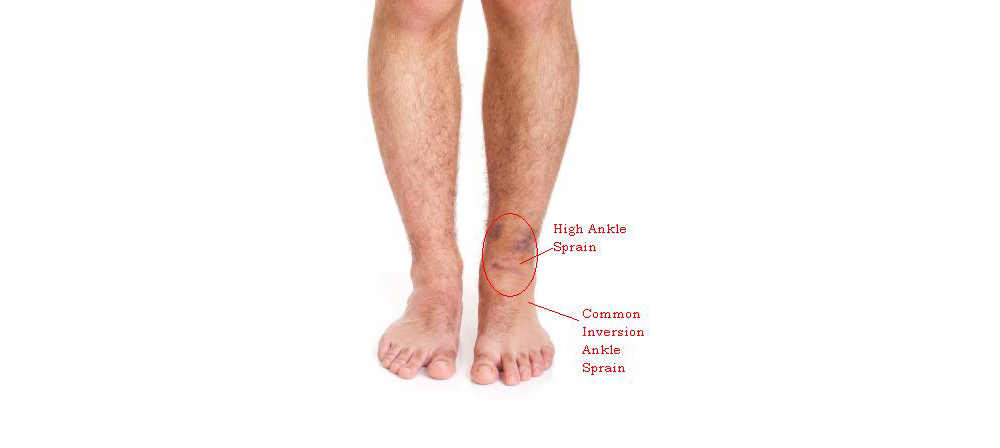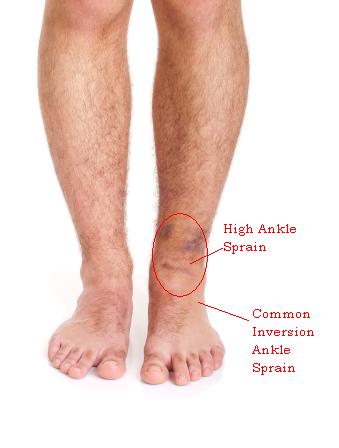High Ankle Sprain
An ankle sprain is one of the most common sports injuries that we encounter at our clinic. The majority of ankle sprains are called inversion sprains. These sprains are the classic “rolling the ankle” when you twist your ankle from the outside of the joint. Perhaps a lesser-known type of ankle sprain is a high ankle sprain. This is technically called a syndesmosis sprain.
What is a High Ankle Sprain?
A syndesmosis sprain is a different type of ankle sprain that affects ligaments higher up in the ankle when compared to those ligaments affected with common inversion ankle sprains. For this reason, syndesmosis sprains are frequently referred to as “high ankle sprains”.
High Ankle Sprain
High ankle sprains are not as common as inversion ankle sprains and they often take longer to heal. The primary structures that are damaged with high ankle sprains are the anterior inferior tibiofibular ligament, the posterior inferior tibiofibular ligament and the interosseous ligament. In simple terms, these are some of the ligaments at the very bottom of your tibia and fibula (the bones in your leg) including the long thin membrane that separates these two bones.
High Ankle Sprain Mechanism
There are various mechanisms for a high ankle sprain but external rotation of the foot, dorsiflexion (bringing your toes toward your shin) or a combination of these movements are the most common. It is usually painful to walk after a high ankle sprain. In some instances, the patient with a high ankle sprain will prefer to walk on the forefoot as dorsiflexion causes pain (since it mimics the mechanism of injury).
Ankle Sprain Diagnosis
X-ray imaging can be helpful for ruling our fracture or assessing the severity of the sprain. (For any chiropractors or medical practitioners reading this blog, we can check the tibia-fibula clear space which should be less than 6mm if undamaged and we can check the tibia-fibula overlap which should be greater than 1mm in the mortise view).
Treatment for Ankle Sprain
Treatment of a high ankle sprain depends on the severity of the case. Immobilization and non-weight bearing is sometimes necessary in more severe cases, while others can continue walking during the course of recovery. Initially passive modalities (physiotherapy) can be helpful in reducing inflammation and promoting tissue healing. Examples of these treatments include ultrasound, microcurrent and interferential current (IFC). Our clinic prefers the use of low level laser therapy. Low level laser therapy improves the cellular composition in the area of the injury, allowing less swelling and decreased pain. Active Release Technique and Graston Technique can also be effective for treating high ankle sprains. The treatment that is right for you will depend on a variety of factors.
We hope that you choose our clinic for your injuries. For more information or to schedule an appointment, please do not hesitate to contact us. Telephone – 905.220.7858. Email – info@burlingtonsportstherapy.com
By: Dr. Kevin McIntyre B.Kin., DC
References
Lin C, Gross MT, Weinhold P. Ankle syndesmosis injuries: anatomy, biomechanics, mechanism of injury and clinical guidelines for diagnosis and intervention. Journal of Orthopaedic & Sports Physical Therapy 2006; 36(6): 372-384.
Pajaczkowski J. Rehabilitation of distal tibiofibular syndesmosis sprains: a case report. Journal of the Canadian Chiropractic Association 2007; 51(1).
References https://burlingtonsportstherapy.com/blog/disclaimer/









